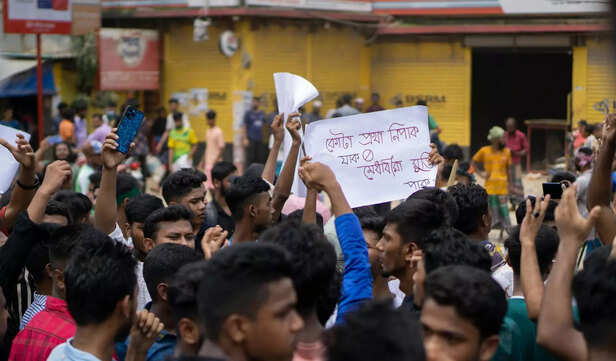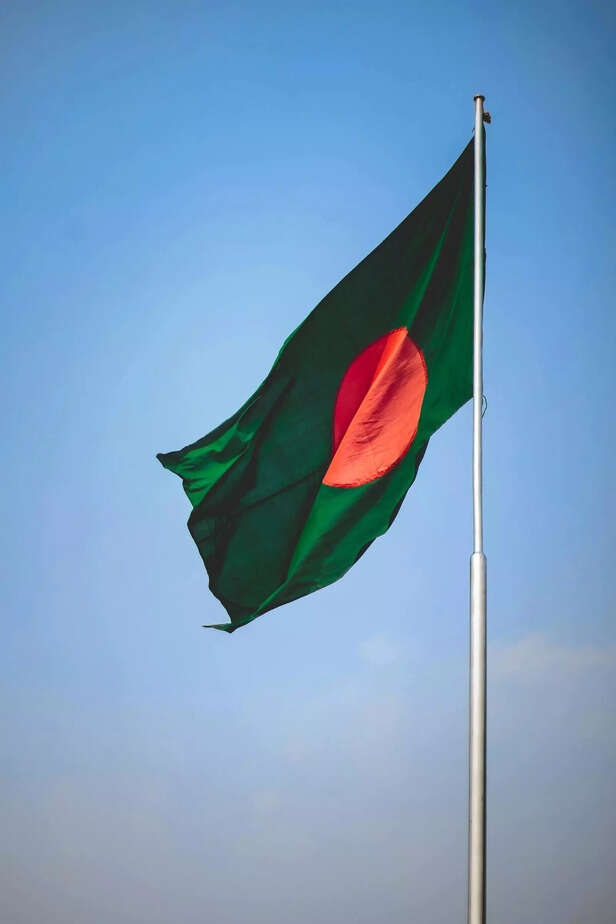Mass Deportation After Operation Sindoor Bangladesh Receives Thousands Overnight!
Ankita Rai | Tue, 03 Jun 2025
Operation Sindoor is a major Indian government initiative launched in May 2025 to identify and deport illegal immigrants, primarily from Bangladesh. Over 2,100 individuals have been removed so far in one of the largest crackdowns on border infiltration. Conducted by intelligence agencies, BSF, and state police, the operation focuses on eastern border states. While officials call it essential for national security, critics highlight human rights concerns and the social fallout. Bangladesh has not formally protested but is monitoring the situation closely, as deportations continue and urban sweeps are expected next.
( Image credit : Pexels )
Photo:
In a swift and large-scale crackdown under Operation Sindoor, Indian authorities have deported over 2,000 illegal immigrants to Bangladesh, marking one of the most extensive border enforcement actions in recent years. Launched in early May 2025, Operation Sindoor is aimed at identifying, detaining, and deporting illegal immigrants, particularly those suspected of crossing over from Bangladesh through India’s porous eastern borders. The operation is being executed jointly by central intelligence agencies, the Border Security Force (BSF), and state police units. The move has triggered significant activity and concern in districts along the Indo-Bangladesh border.
What Is Operation Sindoor?

Operation Sindoor is a multi-agency initiative designed to strengthen border security and address concerns related to demographic shifts, illegal land occupation, and national security risks from undocumented migrants. Although the government has not fully disclosed its scope, sources familiar with the mission describe it as an intelligence-led, high-priority campaign focused on known infiltration routes in Assam, West Bengal, Tripura, and Bihar. The name “Sindoor” reportedly symbolizes the reassertion of legal identity and national boundaries, underscoring the state’s effort to uphold constitutional order and population management.
The Numbers So Far

By June 1, more than 2,100 individuals had been pushed back across the Bangladesh border. The “push back” approach allows for the return of illegal immigrants without undergoing formal deportation proceedings, especially when they are apprehended close to the border or lack valid documents. Many of those deported had been living in India for several years without official identification, ration cards, or valid visas. While some had arrived as early as 2018, others had crossed the border more recently. Officials say this is only the beginning. “This is not a one-time action. Operation Sindoor will continue until the problem of illegal immigration is comprehensively addressed,” a senior Home Ministry official said.
How Was It Carried Out?

The operation utilized biometric verification, intelligence reports, and physical surveillance to locate undocumented immigrants in high-risk areas. Districts such as Dhubri in Assam and Cooch Behar in West Bengal saw the highest deployment of BSF personnel and surveillance technology, including drones. Many individuals were located in informal settlements near forests, tea estates, and river islands. Reports indicate that some migrants fled before being detained, aware of the growing enforcement presence. Authorities estimate that around 400 people crossed the border voluntarily to avoid arrest. Those detained without documentation were escorted to specific points along the Indo-Bangladesh border, where they were handed over to Bangladeshi officials as part of structured repatriation procedures.
Response from Bangladesh

The Bangladeshi government has yet to issue a formal response, though officials in Dhaka are reportedly monitoring the situation closely. Local politicians in border districts have raised concerns about the sudden influx, citing resource constraints and uncertainty around the migrants’ documentation. Unofficial accounts suggest that not all deportees are being accepted immediately. Some are being held in no-man’s land while their identities are verified, leading to tense moments at certain border outposts. However, both sides have thus far avoided direct conflict.
Political and Social Impact

The operation has sparked significant political debate within India. Leaders of the ruling coalition have hailed it as a bold step toward restoring internal security and controlling unauthorized settlement. Opposition parties, however, have raised concerns about its humanitarian implications, particularly during an election year in several states. Human rights organizations have also voiced concern. The South Asia Human Rights Network (SAHRN) issued a statement urging that due legal process be followed in all deportation cases to prevent statelessness or potential rights violations. Despite this, many residents in affected areas have expressed support for the operation, noting that it has reduced pressure on local infrastructure such as schools, hospitals, and employment opportunities.
Human Stories Behind the Numbers

Behind the statistics lie countless untold stories of personal loss and dislocation. Entire families have been split overnight. Children are left behind while parents are deported. Workers who built modest lives in the informal economy now face an uncertain future. One such case is that of Razia Khatun, 35, who was deported from a village near the Assam-Bangladesh border. Her two sons, both born in India, remain in the care of distant relatives. She was sent back without clarity on if or when they might be reunited. Similar stories have emerged from Tripura and West Bengal, where makeshift colonies now stand deserted, and many residents live in fear of being the next to go.
What Lies Ahead
With momentum building, the Indian government has indicated that the operation may soon expand into urban centers, where illegal immigration often goes unchecked. Plans are also underway to digitize citizenship verification, potentially linking state-level records to a centralized national system. For Bangladesh, the challenge will be to manage the return of thousands of individuals many of whom left the country years ago, possess no documentation, and lack familial or residential ties to their supposed homeland. As security, geopolitics, and internal policy intersect at the Indo-Bangladesh border, the long-term consequences of Operation Sindoor are expected to unfold in complex and unpredictable ways.
Unlock insightful tips and inspiration on personal growth, productivity, and well-being. Stay motivated and updated with the latest at My Life XP.
What Is Operation Sindoor?

Operation Sindoor
( Image credit : ANI )
Operation Sindoor is a multi-agency initiative designed to strengthen border security and address concerns related to demographic shifts, illegal land occupation, and national security risks from undocumented migrants. Although the government has not fully disclosed its scope, sources familiar with the mission describe it as an intelligence-led, high-priority campaign focused on known infiltration routes in Assam, West Bengal, Tripura, and Bihar. The name “Sindoor” reportedly symbolizes the reassertion of legal identity and national boundaries, underscoring the state’s effort to uphold constitutional order and population management.
The Numbers So Far

Bangladesh
( Image credit : Pexels )
By June 1, more than 2,100 individuals had been pushed back across the Bangladesh border. The “push back” approach allows for the return of illegal immigrants without undergoing formal deportation proceedings, especially when they are apprehended close to the border or lack valid documents. Many of those deported had been living in India for several years without official identification, ration cards, or valid visas. While some had arrived as early as 2018, others had crossed the border more recently. Officials say this is only the beginning. “This is not a one-time action. Operation Sindoor will continue until the problem of illegal immigration is comprehensively addressed,” a senior Home Ministry official said.
How Was It Carried Out?

students
( Image credit : Pexels )
The operation utilized biometric verification, intelligence reports, and physical surveillance to locate undocumented immigrants in high-risk areas. Districts such as Dhubri in Assam and Cooch Behar in West Bengal saw the highest deployment of BSF personnel and surveillance technology, including drones. Many individuals were located in informal settlements near forests, tea estates, and river islands. Reports indicate that some migrants fled before being detained, aware of the growing enforcement presence. Authorities estimate that around 400 people crossed the border voluntarily to avoid arrest. Those detained without documentation were escorted to specific points along the Indo-Bangladesh border, where they were handed over to Bangladeshi officials as part of structured repatriation procedures.
Response from Bangladesh

Bangladeshi
( Image credit : Pexels )
The Bangladeshi government has yet to issue a formal response, though officials in Dhaka are reportedly monitoring the situation closely. Local politicians in border districts have raised concerns about the sudden influx, citing resource constraints and uncertainty around the migrants’ documentation. Unofficial accounts suggest that not all deportees are being accepted immediately. Some are being held in no-man’s land while their identities are verified, leading to tense moments at certain border outposts. However, both sides have thus far avoided direct conflict.
Political and Social Impact

India
( Image credit : Pexels )
The operation has sparked significant political debate within India. Leaders of the ruling coalition have hailed it as a bold step toward restoring internal security and controlling unauthorized settlement. Opposition parties, however, have raised concerns about its humanitarian implications, particularly during an election year in several states. Human rights organizations have also voiced concern. The South Asia Human Rights Network (SAHRN) issued a statement urging that due legal process be followed in all deportation cases to prevent statelessness or potential rights violations. Despite this, many residents in affected areas have expressed support for the operation, noting that it has reduced pressure on local infrastructure such as schools, hospitals, and employment opportunities.
Human Stories Behind the Numbers

indian flag
( Image credit : Pexels )
Behind the statistics lie countless untold stories of personal loss and dislocation. Entire families have been split overnight. Children are left behind while parents are deported. Workers who built modest lives in the informal economy now face an uncertain future. One such case is that of Razia Khatun, 35, who was deported from a village near the Assam-Bangladesh border. Her two sons, both born in India, remain in the care of distant relatives. She was sent back without clarity on if or when they might be reunited. Similar stories have emerged from Tripura and West Bengal, where makeshift colonies now stand deserted, and many residents live in fear of being the next to go.
What Lies Ahead
With momentum building, the Indian government has indicated that the operation may soon expand into urban centers, where illegal immigration often goes unchecked. Plans are also underway to digitize citizenship verification, potentially linking state-level records to a centralized national system. For Bangladesh, the challenge will be to manage the return of thousands of individuals many of whom left the country years ago, possess no documentation, and lack familial or residential ties to their supposed homeland. As security, geopolitics, and internal policy intersect at the Indo-Bangladesh border, the long-term consequences of Operation Sindoor are expected to unfold in complex and unpredictable ways.
Unlock insightful tips and inspiration on personal growth, productivity, and well-being. Stay motivated and updated with the latest at My Life XP.
Frequently Asked Questions (FAQs)
- What is Operation Sindoor?Operation Sindoor is a coordinated crackdown to detect and deport illegal immigrants, mainly from Bangladesh, across India’s eastern border.
- How many people have been deported so far?Over 2,100 illegal immigrants have been deported since the operation began in May 2025.
- Has Bangladesh responded to the deportations?Bangladesh has not issued an official protest but is closely monitoring the situation and verifying identities.









